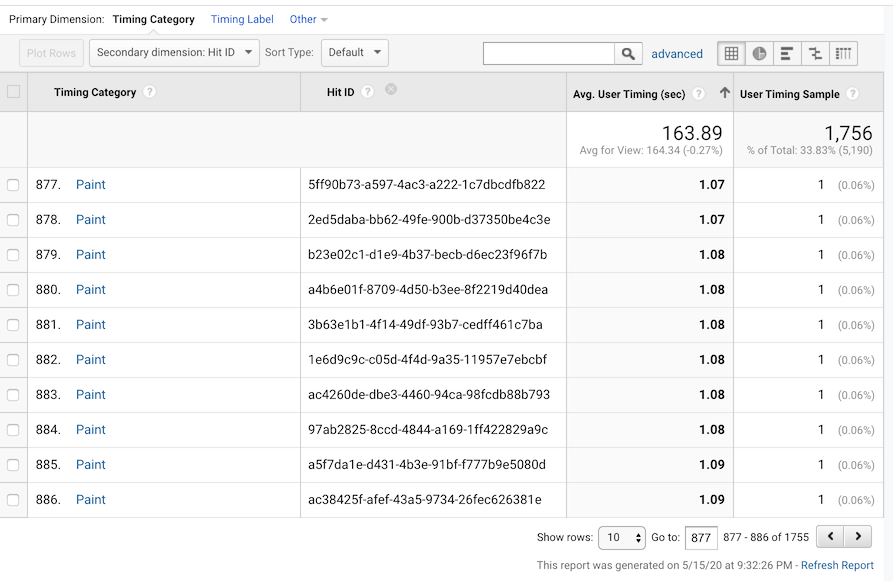Step-by-Step Overview: Leveraging Secondary Dimension in Google Analytics
Step-by-Step Overview: Leveraging Secondary Dimension in Google Analytics
Blog Article
Optimize Reporting Accuracy With Additional Dimension in Google Analytics
Comprehending how to make the most of reporting precision with additional dimensions in Google Analytics can significantly improve the depth of insights stemmed from data evaluation. By incorporating secondary measurements purposefully, marketing professionals can discover surprise patterns and connections that might not be quickly obvious when assessing primary metrics alone. This nuanced method makes it possible for a much more extensive understanding of individual actions and project performance, leading the way for more targeted and reliable decision-making. The usage of additional dimensions holds the vital to unlocking a wide range of useful info that can transform the efficiency of digital advertising and marketing strategies.
Understanding Second Measurements in Google Analytics
Second measurements enable individuals to segment and further study data past the key measurement picked. While the primary measurement may display the complete number of web page views, including a second dimension such as 'source/medium' can offer understandings into where the web traffic originated from.
In addition, recognizing second measurements is vital for creating much more personalized records tailored to certain business objectives. By choosing the ideal mix of key and secondary measurements, analysts can uncover patterns, fads, and correlations that may or else stay concealed. This nuanced strategy to data evaluation encourages businesses to make educated decisions based upon a comprehensive understanding of individual behavior across various dimensions.

Just How to Use Secondary Dimensions
When leveraging additional dimensions in Google Analytics, the practical application entails choosing particular data specifications to more fine-tune insights past the main dimension's extent. To apply second measurements properly, begin by accessing the record or dataset where you desire to dig deeper right into the information. Bear in mind that additional dimensions help supply context and granularity to your key dimension information, allowing you to draw out even more significant and workable insights from your Google Analytics reports.
Leveraging Secondary Measurements for Insights
Utilizing additional measurements in Google Analytics enables a more thorough evaluation of information, using valuable understandings beyond the key measurement's extent. By leveraging secondary dimensions, individuals can dive much deeper into the efficiency metrics of their site or app, revealing concealed patterns and trends that may not be promptly obvious when just taking a look at key dimensions.
One secret benefit of using additional measurements is the ability to section and filter information a lot more exactly. This can aid experts and marketing professionals better recognize the behavior of specific user segments, such as new visitors versus returning visitors, or traffic originating from various geographic places.
Additionally, secondary measurements enable users to compare and contrast different information factors within the same report, giving a more all natural view of efficiency (Secondary Dimension in Google Analytics). For example, matching the key measurement of touchdown pages with additional measurements like gadgets or demographics can expose which web pages are most effective in involving customers on various tools or from various demographic groups.
Fundamentally, leveraging second measurements in Google Analytics equips users to extract richer insights from their data, resulting in even more enlightened decision-making and inevitably, boosted performance.
Finest Practices for Secondary Measurements
When assessing information in Google Analytics, incorporating second measurements effectively enhances the deepness of insights stemmed from the main metrics. Extra resources To make the most out of additional dimensions, it is vital to follow best techniques that guarantee accurate and purposeful coverage. It is important to pick secondary dimensions that straighten with the primary statistics you are analyzing. Selecting pertinent secondary measurements aids in supplying context and a more clear understanding of the data being checked out.
In addition, it is advised to limit the number of additional measurements made use of in a solitary report to avoid overwhelming the analysis with as well much information. Focusing on a few key second measurements at a time can cause even more focused and workable insights. Furthermore, consider exploring with various combinations of main and second measurements to uncover one-of-a-kind patterns and patterns that may not appear when checking out the data alone.
Advanced Analysis Strategies With Second Measurements
Checking out detailed information relationships through the critical application of additional measurements can introduce nuanced understandings that boost the depth of evaluation in Google Analytics. By incorporating secondary dimensions with primary information sets, innovative analysis strategies can be utilized to draw out valuable details.
Furthermore, additional dimensions can boost the analysis of conversion paths by offering extra context. Recognizing my link the various touchpoints a user communicates with before transforming can be important in maximizing the client trip - Secondary Dimension in Google Analytics. By using second measurements to look into specifics such as web traffic resources or gadgets used, marketing professionals can tailor approaches to target high-converting channels effectively
Final Thought
To improve information analysis and gain much deeper understandings right into user actions, comprehending additional measurements in Google Analytics is important - Secondary Dimension in Google Analytics. Second dimensions enable customers to section and better dissect information beyond the key measurement chosen. While the primary measurement might display the overall number of page sights, including a secondary measurement such as 'source/medium' can provide understandings into where the traffic originated from.When leveraging additional measurements in Google Analytics, the useful application involves choosing certain data criteria to further fine-tune insights past the main measurement's scope. Keep in mind that second dimensions assist provide context and granularity to your main measurement information, allowing you to extract more see this workable and meaningful understandings from your Google Analytics records
Report this page